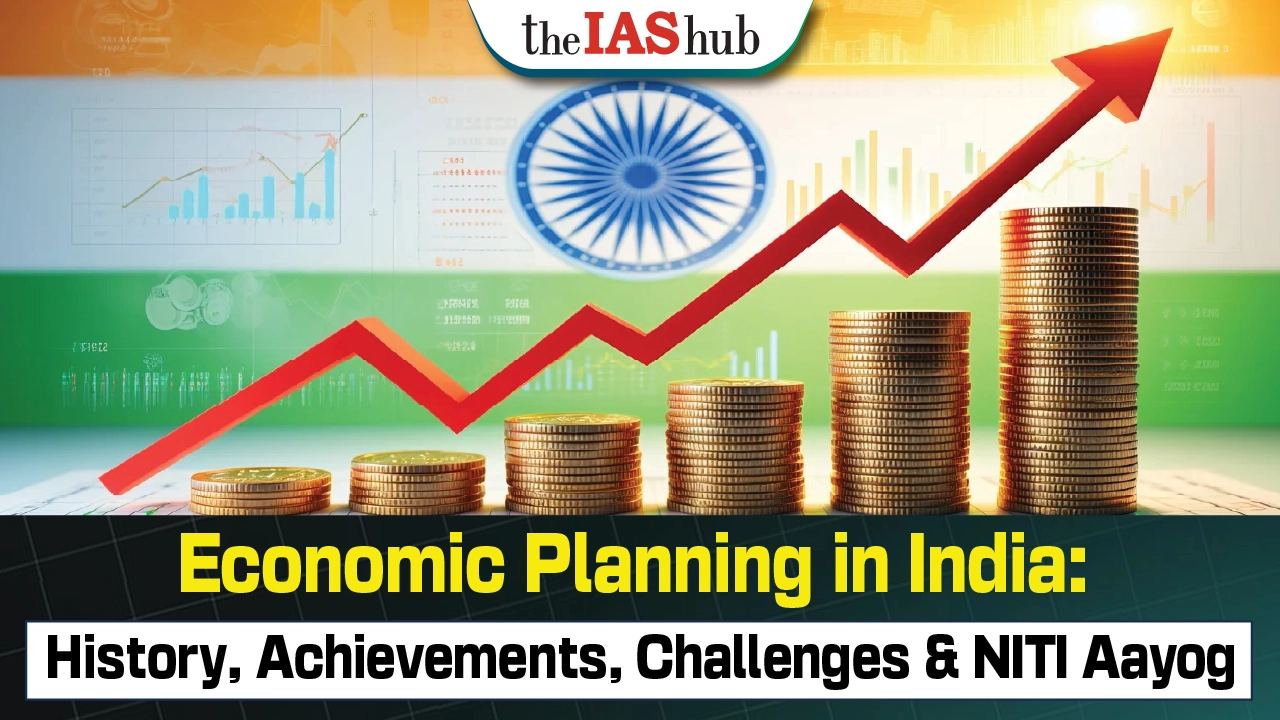Explore the evolution of economic planning in India, from the Planning Commission to NITI Aayog. Learn about five-year plans, key achievements, structural issues, poverty, unemployment, and the future of policy planning in India.


Economic Planning In India refers to the strategic allocation of resources through long-term plans aimed at ensuring balanced economic growth and social equity. India formally adopted economic planning in 1951 with the launch of the First Five-Year Plan, influenced by leading economists and policymakers like Jawaharlal Nehru and P.C. Mahalanobis. The Planning Commission, established in 1950, played a central role in shaping the direction of India’s development until it was replaced by NITI Aayog in 2015. Over the decades, economic planning has contributed to substantial progress in agriculture, industry, infrastructure, and human development. However, persistent challenges such as poverty, unemployment, regional disparities, and administrative inefficiencies continue to test the efficacy of planning frameworks. This article explores the journey of economic planning in India, evaluates its key achievements and limitations, and highlights the role of NITI Aayog in reshaping India’s policy landscape in the 21st century.
|
Achievements of Economic Planning in India

Besides the achievements as told above, there are many unfulfilled tasks which the planning in India is yet to achieve completely.
Planning commission was a non-constitutional and non- statutory organization set up by government resolution on 15th March 1950 which was given the authority to formulate the five-year plans for economic growth.
|
It had the following functions
|
Achievements of the planning commission
|
Issues with the Planning commission
|
NITI Aayog (National Institute for Transforming India) was established as a successor of the Planning Commission as an extra-constitutional body created by an executive resolution. It has been created as a premier policy think tank of the government providing both directional and policy inputs.
Achievements of NITI Aayog



Refine your answer writing skills and elevate your UPSC preparation with personalized support and expert feedback.
Fill out the form to get started with the program or any other enquiries !








Are you dreaming of becoming an IAS officer? Then, IAShub can be your best guide. It is one of the Best IAS Coaching in Delhi. Many students who want to clear the UPSC exam join IAShub for learning. The institute gives both online and offline classes. Their teachers are experienced and helpful. They easily explain every topic. Students also get notes, tests, and tips to do well in the exam.
IAShub is in Delhi and is trusted by many UPSC students. It offers coaching for every part of the UPSC exam – Prelims, Mains, and Interview. The classes are simple and easy to understand. The teachers are experts and guide students in the right way. IAShub is also known for its helpful notes, test series, and answer-writing practice. IAShub is the best coaching in Delhi and also gives UPSC Online Classes. This helps students from any place in India to learn. The online classes are live and also recorded. So, students can watch them anytime. These classes cover the full UPSC syllabus.
Here are some important services provided by IAShub:
The UPSC Civil Services Exam has three parts:
This exam is tough, but with the right guidance, it becomes easy to manage. Students must study smart and stay regular.
IAShub supports students from the beginning to the end. It gives the right books, tests, and notes. The classes are easy to follow, and the teachers are always ready to help. Students get personal doubt sessions too. The test series and answer checking help students learn where they need to do better. Also, free study materials save time and money.
IAShub also guides students during the final stage – the interview. Experts take mock interviews and give useful tips. This full support makes IAShub one of the best IAS coaching in Delhi.